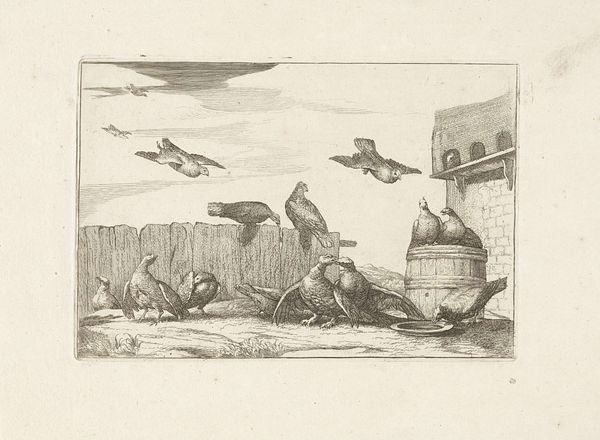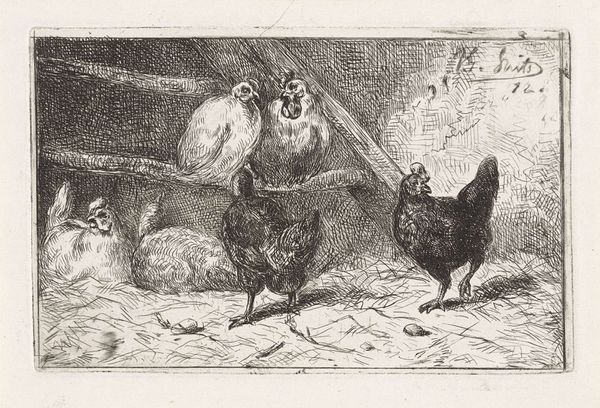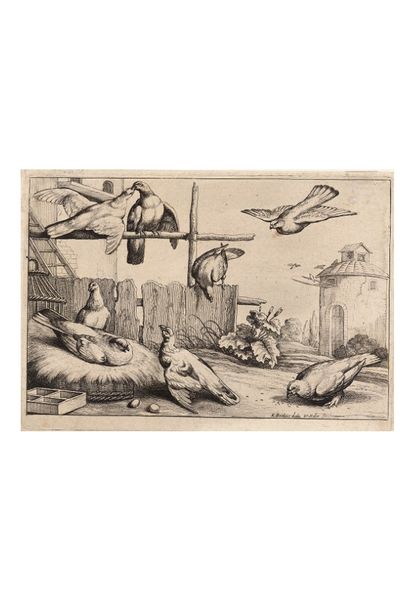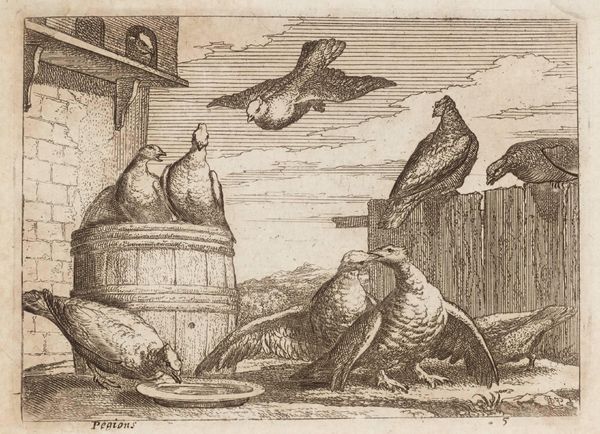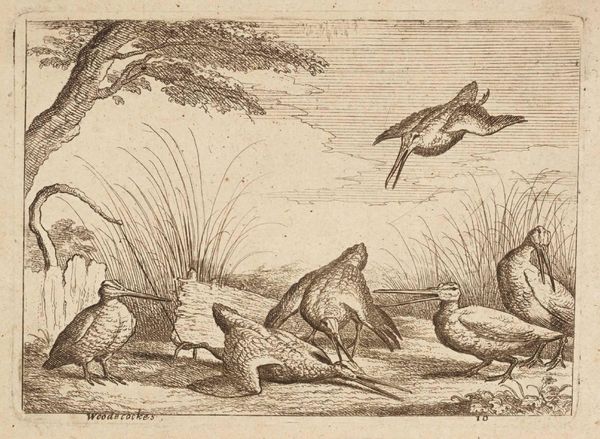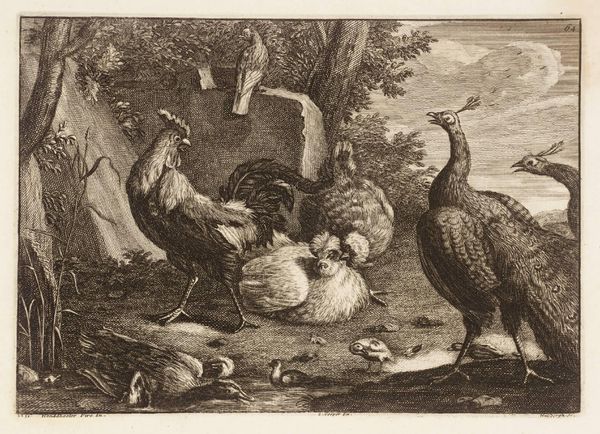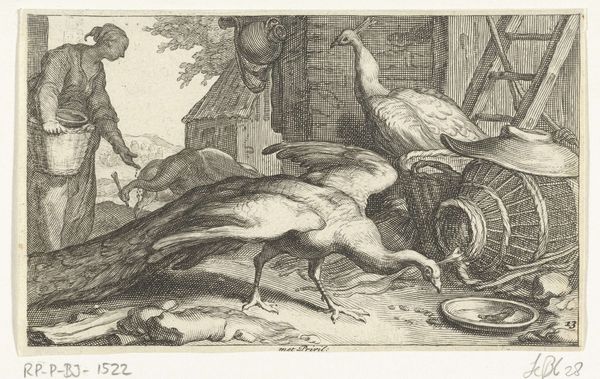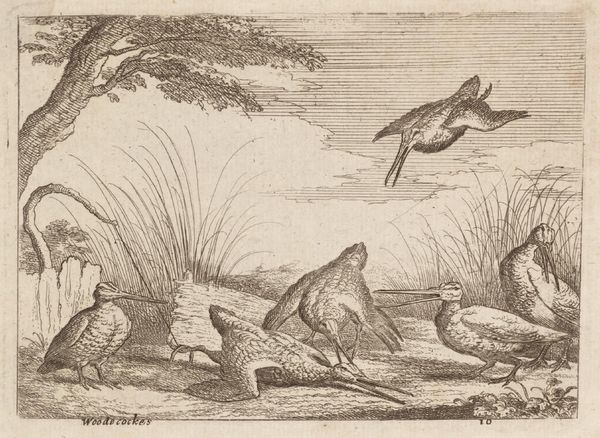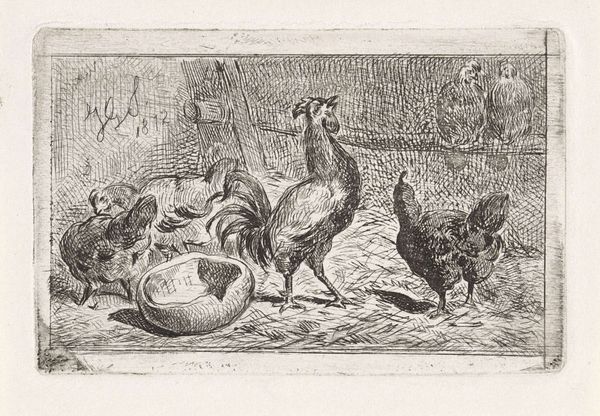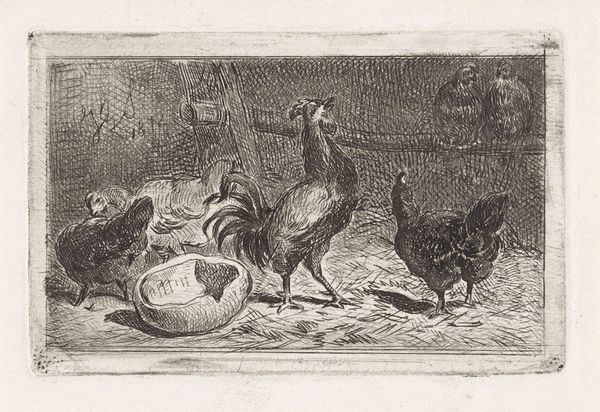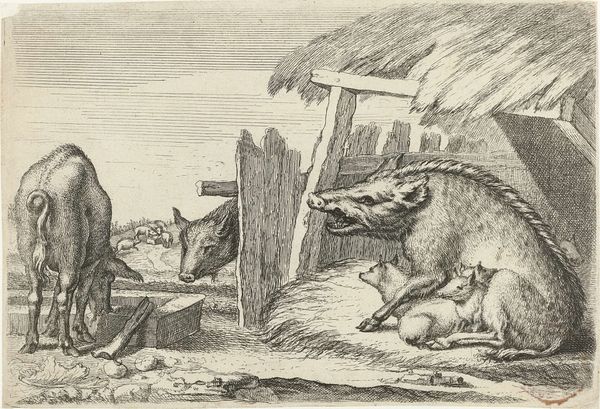
print, etching, engraving
#
dutch-golden-age
# print
#
etching
#
old engraving style
#
engraving
#
realism
Dimensions: height 127 mm, width 189 mm
Copyright: Rijks Museum: Open Domain
Editor: We're looking at "Duiven bij een duiventil," or "Pigeons at a Dovecote," an etching and engraving that resides here at the Rijksmuseum. It's so detailed; I’m fascinated by the texture achieved just with lines! How would you approach interpreting this work? Curator: This piece invites us to consider the labour involved in its production. Etching and engraving, particularly at this level of detail, required immense skill and time. Consider the socioeconomic position of someone who would commission such a print, and compare it to the engraver. What materials would they need, and how accessible were these in 17th-century Netherlands? Editor: So, it’s not just about the image, but about who made it, and what that process entailed? I hadn't thought of it that way. Curator: Exactly. And who was consuming prints like these? Were they displayed in homes? Were they models for other artists? Also, notice the subject matter - domestic pigeons. What does their relationship to humans represent? Is this "realism" masking the artist's intention, or adding layers to the interpretation? Editor: Interesting! It raises so many questions about access, consumption, and how art served different strata of society. The pigeons themselves become part of the commentary. Curator: Indeed! By shifting our focus from artistic genius to production, material conditions and intended consumption, we unearth social narratives that challenge simple notions of aesthetics and subject-matter. Editor: I see. Thanks for that shift in perspective, that actually completely changes how I’ll look at prints from now on. Curator: Glad to share new approaches to interpreting these wonderful objects!
Comments
No comments
Be the first to comment and join the conversation on the ultimate creative platform.
